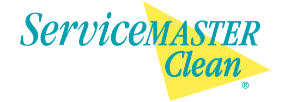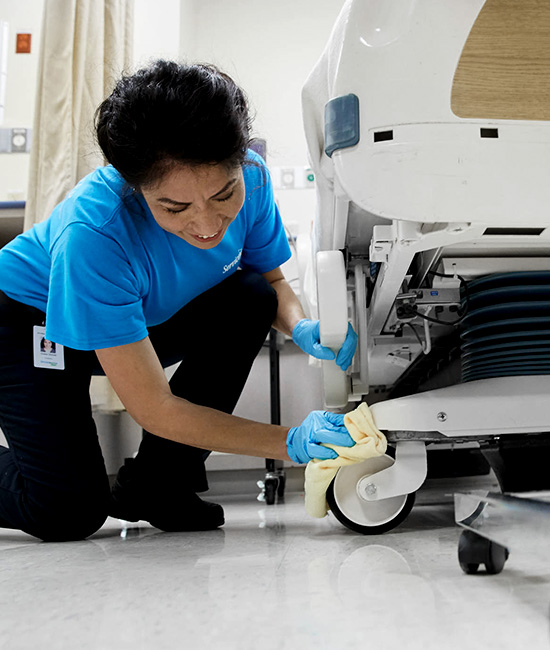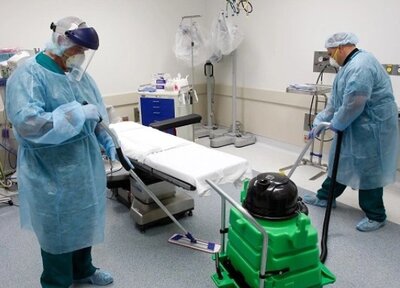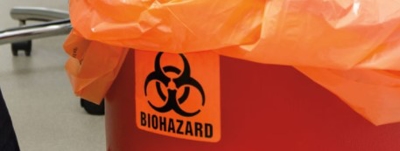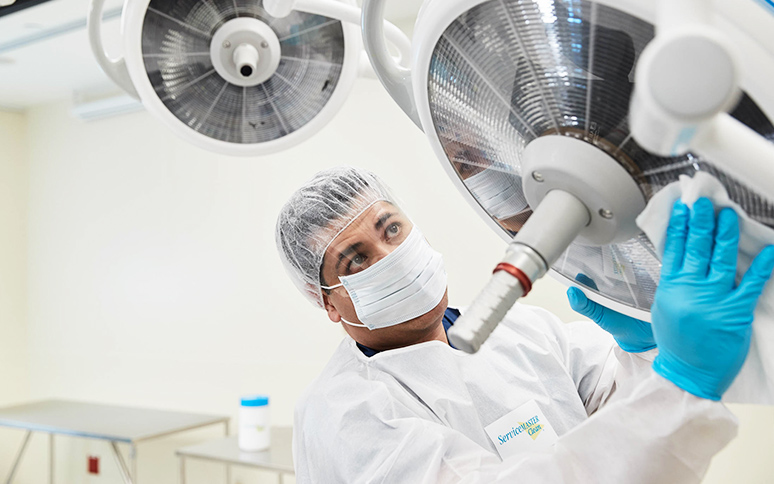Understanding the Epidemiologic Triangle
To keep diseases at bay, it’s important to thoroughly understand the Epidemiologic Triangle and the implications of each side. Use the following information from the janitorial cleaning professionals at ServiceMaster Clean to help prevent infectious diseases from spreading throughout your medical facility.
What Is Epidemiology?
According to the Centers for Disease Control and Prevention (CDC), epidemiology is the study of the distribution and determinants of health-related states and events in specified populations. In other words, epidemiology is a branch of medicine that analyzes where diseases and other health factors originate, how they spread and how to possibly control them. Epidemiology investigates a wide range of public health issues, including:
- Environmental exposures like air pollutants or lead poisoning.
- Infectious diseases like influenza and pneumonia.
- Injuries like community-based homicides or national surges in domestic violence.
- Non-infectious diseases like rises in certain cancers or an increase in major birth defects.
- Natural disasters like hurricanes and earthquakes.
- Terrorism.
What Is the Epidemiologic Triangle?
The Epidemiologic Triangle, sometimes referred to as the Epidemiologic Triad, is a tool that scientists use for addressing the three components that contribute to the spread of disease: an external agent, a susceptible host and an environment that brings the agent and host together. Since different diseases require different balances and interactions between these three factors, it’s critical to fully assess each component in order to develop effective control and prevention measures.
The Agent
The agent is the pathogen, including a virus, bacterium, parasite or other microbes. According to the CDC, the concept of an agent has been widened to include both chemical or physical causes of disease or injury.
Usually, an agent’s presence can be enough to cause disease. However, a variety of factors can influence whether or not exposure to the agent will directly result in disease. That’s why it’s important to consider the other vertices on the Epidemiologic Triangle before making a final assessment.
The Host
The host is the organism who is exposed to and harbor a disease. Sometimes, the host may not show any signs of illness and could be unaware that they have the disease. Sets of risk factors, including age, gender, hygiene practices and genetic composition can influence a host’s susceptibility to an infectious agent. Typically, children, the elderly and people with compromised immune systems are more susceptible to becoming a host.
The Environment
The last component in the Epidemiologic Triangle is the environment. This refers to any extrinsic factors that can influence exposure and susceptibility. Environmental factors may include physical aspects like climate, biologic aspects like animals transmitting agents and socioeconomic factors like crowding or lack of sanitation.
How to Break the Epidemiologic Triangle
To prevent the spread of disease, at least one side of the Epidemiologic Triangle must be broken. Healthcare staff should follow best practices and procedures to help prevent infections from spreading in your facility. Some things they can do to break the Epidemiologic Triangle include:
- Follow proper hand hygiene at all times.
- Wear appropriate personal protective equipment (PPE) while treating patients.
- Kill germs by disinfecting high-touch areas regularly.
- Clean and disinfect lobbies, exam rooms, bathrooms and other common areas often.
Understanding the Epidemiologic Triangle is not only crucial for medical facilities but also for environments like senior living homes. Utilizing healthcare cleaning services and senior cleaning services that adhere to best practices and procedures, such as those offered by ServiceMaster Clean, can play a vital role in breaking the Epidemiologic Triangle.
If you need help preventing the spread of infection in your facility, call on the experts at ServiceMaster Clean. Our healthcare cleaning services use best practices and procedures designed by industry leaders like the CDC to help with infection control and prevention, risk reduction and patient environment improvement. Contact us today to find out how our patient-centered cleaning services are designed to help your medical facility keep the transmission of infection to a minimum.
